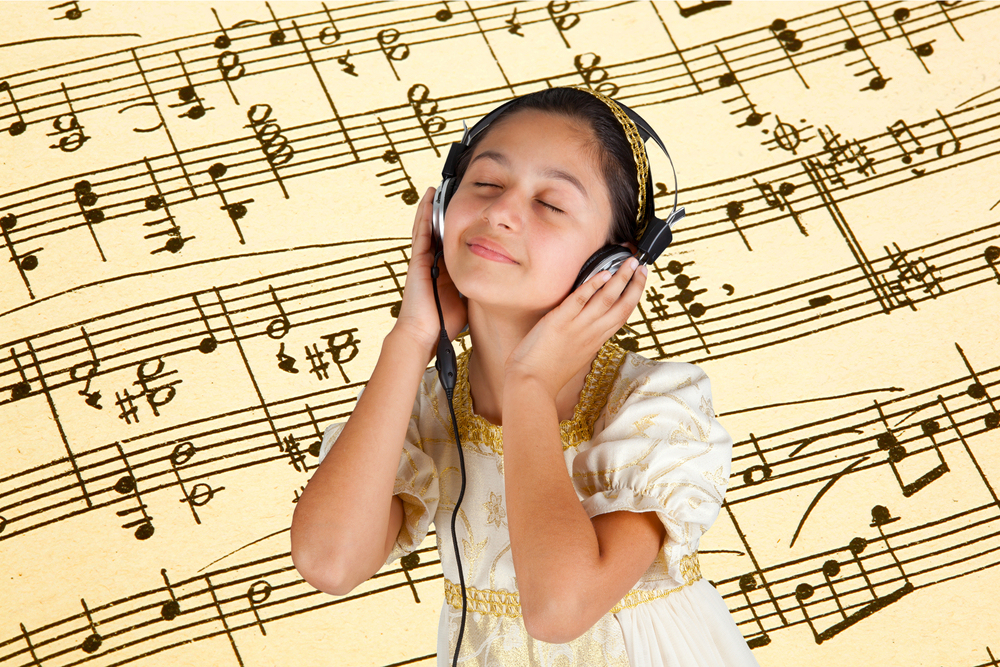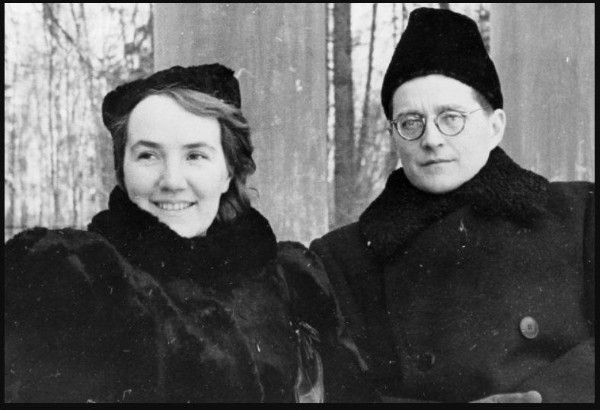The phrase “classical music” covers over a thousand years of music. The genre spans everything from massive works for choral ensembles to delicate solo piano works and everything else imaginable in between.
If you’re new to classical music, it can be overwhelming to decide where or how to jump in. So today we’re looking at four genres of music and suggesting a few classical pieces that might appeal to you.

© Prodigies, Young Music LLC
Rock
Like classical music, rock music has many subgenres: indie rock, punk rock, heavy metal, grunge…the list goes on and on!
But some qualities that tie the subgenres together include intense energy and instrumental virtuosity.
Classical music has plenty of both!
If you’re interested in rock, you might be interested in…
Stravinsky: Rite of Spring
Legend has it that the premiere of this ballet was so dissonant that fights and even a riot broke out at its premiere… That’s some real rock ‘n’ roll energy!
Like the stories behind several legendary rock performances, this riot has been mythologized into a more extreme event than it really was. Historians today agree that the audience’s objections were likely linked more to the choreography than the music. But it remains one of the most famous premieres in music history, and it makes for a great story!
Paganini: 24 Caprices
Violinist Niccolò Paganini was born in 1782. He was a genius when it came to mastering and creating new techniques. Guitar players like Jimmy Hendrix have often been compared to him.
In some ways, he was one of the pioneers of the stereotype of the rock idol, bedding countless women, using powerful drugs like opium, and stoking rumors that his abilities originated with Satan himself.
This video comes from the 2013 movie The Devil’s Violinist, starring violinist David Garrett.
Other suggestions:
J.S. Bach’s organ works, Liszt’s Transcendental Etudes, third movement of Samuel Barber’s violin concerto.
Pop
The best pop music features memorable melodic hooks and catchy rhythms. Unfortunately, however, classical music and pop music are often pitted against each other, with some decrying pop music’s lack of depth and others classical music’s elitism.
But I’ve got a secret: the dichotomies are false, the people who gate-keep are snobs, and you can enjoy both!
Pachelbel: Canon in D
I chose this one because it uses a particular combination of bass notes (or, to be more specific, a “chord progression”) that is often found in pop music.
The original piece is relatively peaceful. But if you’re craving a more energetic beat, many pop musicians have woven elements of Pachelbel’s Canon into their own work.
One of the most famous examples of this is Oasis’s “Don’t Look Back In Anger.” This remix puts the two pieces side-by-side to show how they work together:
If you’re a music nerd, take a look at this video, which explains more about what’s happening:
Rachmaninoff: Piano Concerto No. 2
Even though you might not think so, you probably already know the slow movement of Rachmaninoff’s second piano concerto. Why, you ask? The theme from its slow movement was used as the melody in the mega-hit pop song “All By Myself.”
The classical inspiration:
The pop song:
After “All By Myself” was released, lawyers predictably got involved. Eventually songwriter Eric Carmen had to pay a full twelve percent of the song’s royalties back to composer Sergei Rachmaninoff’s estate.
We’ve written a couple of articles about classical music’s influence on pop music (The Pop Classical and Pop-Classical Connection). Check them out!
Other suggestions:
Summer from the Four Seasons by Vivaldi, Nuvole Bianche by Ludovico Einaudi
New Age
New Age music is often made by musicians with classical training. It’s a difficult genre to define, but most New Age music seeks to create a calming mood or a spiritual atmosphere. It was especially popular in the 1990s and early 2000s.
Arvo Pärt: Spiegel im Spiegel
Spiegel im Spiegel is a ten-minute work by Estonian composer Arvo Pärt that was originally written for violin and piano. Since its composition, it has been rearranged for a number of instruments.
Its title means “mirror(s) in the mirror”, suggesting a long, still series of reflections.
Ralph Vaughan Williams: Fantasia on a Theme by Thomas Tallis
This rich work for string orchestra was premiered in 1910. Like a lot of New Age music, it wears its heart on its sleeve, eschews the rigid structures of traditional classical music, and creates an ethereal atmosphere that feels timeless.
Other suggestions:
Anything by Ludovico Einaudi, Nocturnes by Chopin
Jazz
After jazz’s emergence as a genre in the early twentieth century, classical composers often found themselves inspired by jazz music, and vice versa. Many Black classical musicians who were discriminated against in classical music went on to distinguished careers as jazz musicians.
William Grant Still: Symphony No. 1, “Afro-American”
This symphony by Black composer William Grant Still dates from 1930. The piece as a whole is a marvelous synthesis of orchestral music and the blues. These musical traditions were deeply personal to Still; he had grown up hearing his family sing blues music.
Florence Price: Fantasie Negre
Florence Price is a composer who is having a much-deserved modern renaissance! Price was born in 1887 in Little Rock, Arkansas. After studying piano, organ, composition, and attending the New England Conservatory, she became a renowned composer.
Much of her work draws heavily on rich Black musical traditions.
Other suggestions:
Gershwin’s Rhapsody in Blue, Bernstein’s Suite from West Side Story
So Jump On In!
Classical music has a reputation for being unapproachable, but nowadays it’s easier than ever to use technology to find new music you love, the false boundaries of genre be damned.
Even though there are still many audience members who put classical music on a harmful cultural pedestal, most working classical musicians today embrace music of all genres, and they’re having happier creative lives because of it.
If any of these works strike your fancy, check out your streaming service of choice for other pieces by the same composer, or works for an instrument that strikes your fancy. The world of classical music is so broad, you’re bound to find something that appeals to your tastes.
Happy listening!
For more of the best in classical music, sign up for our E-Newsletter




I am amazed at the preponderance of less important (even if enjoyable) music on this list. There are far better first class pieces even by second rate composers! Grieg’s Holberg Suite; Mendelssohn’s Scottish Symphony #3 and Overture to Midsummer Night’s Dream; Brahms’ Serenades four hand piano music and 3rd Symphony; Handel’s Water Music; Bach’s Music Offering; Beethoven’s Sixth Symphony and Appassionata sonata;; Dvorak 8th Symphony (From the New World), Chopin Ballades; Mozart’s Marriage of Figaro; FIRST MOVEMENT of Barber’s Violin concerto plus his Piano Sonata; Schumann piano music and songs; Schubert songs; Stravinsky’s Pulcinella; Ives’ Central Park in the Dark; John Adams’ John’s Alleged Dances; Berg’s Violin Concerto; Ravel La Valse, Valse Romantique et Sentimental, and Alberado de Graciosa; Debussy piano music; Copland clarinet concerto;Thomas Moore’s Irish songs; Liszt piano transcriptions; Faure/Messager four hand transcription of Wagner’s Ring cycle; Rimsky-Korsakov’s Scheherazade; Any Astor Piazzolla;